After years of masking against a perceived viral threat – “the spike protein” – that was later injected into millions of willing people, the answer is always the same:
 Trust the Science.
Trust the Science.
The obvious question is always overlooked. Is the science valid?
Does the mask work?
The Latest Mask Study
According to the latest data from a March 2021 large randomized Danish trial study, published in the Annals of Internal Medicine, the answer for mask effectiveness is a resounding NO Statistical Significance!
In plain English? Masks do not work when it comes to protection.
Conclusion: The recommendation to wear surgical masks to supplement other public health measures did not reduce the SARS-CoV-2 infection rate among wearers by more than 50% in a community with modest infection rates, some degree of social distancing, and uncommon general mask use. The data were compatible with lesser degrees of self-protection.
Ignoring the Science
 Despite indisputable evidence of masks being “ineffective,” officials in Los Angeles, and other cities, ignore the science, and are again urging people to wear the mask. In California, the Governor has signed legislative bill 2098 into law that would punish doctors for COVID misinformation based on “global consensus on masks and experimental vaccines.”
Despite indisputable evidence of masks being “ineffective,” officials in Los Angeles, and other cities, ignore the science, and are again urging people to wear the mask. In California, the Governor has signed legislative bill 2098 into law that would punish doctors for COVID misinformation based on “global consensus on masks and experimental vaccines.”
The Los Angeles County Department of Public Health strongly recommends everyone, regardless of vaccination status, wear masks indoors in public places as a precautionary measure,” the department said in a June 28 statement.
Universities followed suit in mandating masks for vaccinated students and employees. Mask guidelines make clear what the schools recommend. Note: guidelines are not mandatory.
What is the purpose of pushing the ineffective mask on unsuspecting people?
1. To normalize deprivation oxygen to the body?
2. To smother people?
3. To brainwash the confused?
4. To create fear, panic?
5. To create another artificial state-of-emergency?
6. To malnourish people and increase adverse effects?
7. To “govern” the people? Govern meaning “to control and direct”
8. To continue treatments for flu, RSV, and other respiratory illnesses with ongoing poor outcomes?
9. To keep the costs rising as hospitals claim they are “at capacity”?
10. Because officials can?
The CDC, and officials, know that the mask does not work to protect human health in children, in adults, or in healthcare workers. Officials also know that masks cause longterm psychological harm along with insomnia, tremors, anxiety, hallucinations, and suicide associated with the inoculations. The question people should be asking is: Shouldn’t there be a trail of evidence showing the failure of masks?
Indeed, plenty of evidence-based medicine exists, showing masks to be useless. By December 2021, more than 150 medical studies had been complied to show that the face mask is harmful and ineffective. However, this evidence is never reported in the news whose mantra is “safe and effective.”
The only way to remove bias from scientific research in the medical field is with randomized clinical trials (RCT). Contrary to popular belief, every single RCT ever performed on mask usage and prevention of infection for laboratory-confirmed influenza, the common cold, or other respiratory viruses shows that masks are ineffective.” – Vincent James, Trust the Science
Just ….
 Trust the Science.
Trust the Science.
The CDC no longer appears to believe its own special brand of science when it says ,”We follow the science and it is always changing.” According to theHill.com: “This rhetorical cover for political science — not virology — rightly could cause citizens to doubt expert guidance in the future.”
There is plenty of reasons to doubt expert guidance. “The science” is now reporting that monoclonal antibodies no longer work against new strains of SARS-COVID. So, before you trust the science, first, review the science, then discern the science.
From D68 To RSV
Every decade, or so, a “new virus” is selected as the cause of a new upper respiratory outbreak. In August of 2014, the media warned about a new “mysterious” respiratory illness with polio-like paralysis caused by a serious strain of Enterovirus “D68.” Within a few months the alpha –numeric virus had affected “over 1000 children in several states” with at least 11 deaths. The CDC experts claimed they did not know why this virus had taken hold but they predicted it would become a “nationwide epidemic.”
No “expert” connected the start of the D68 virus to the timing of annual back-to-school jabs. No expert connected similar cases of vaccine-derived polio paralysis reported in South Sudan and Madagascar [See the Nov 2014 article titled, The Declining Health of Children: Connect the dots]. Just as suddenly as D68 had appeared, it disappeared out of the hospitals and out of the news cycle.
Fast forward to 2022 and after COVID and its variants, a new upper respiratory viral threat is selected: Respiratory Syncytial virus. RSV is making the news. Officials claim that the risk is not just in kids, but also in some (senior) adults. The experts blame RSV for packed emergency rooms and that “hospitals are overwhelmed.” But nursing staffs cry foul and press hospitals for understaffing while they go on strike for better pay.
We are stretched incredibly thin at the hospital,” she said. “It is dangerous and scary some shifts — the care that some of the patients are receiving.
 What are the real reasons for hospital shortages? Are staff being fired for declining the jab? Why are citizen journalists recording empty hospital parking lots? What is the truth? All the while, the CDC is making its RSV symptoms list and checking it twice. It is warning people of high risk for RSV, and comparing RSV to the cold and COVID without evidence. Have we seen this movie before?
What are the real reasons for hospital shortages? Are staff being fired for declining the jab? Why are citizen journalists recording empty hospital parking lots? What is the truth? All the while, the CDC is making its RSV symptoms list and checking it twice. It is warning people of high risk for RSV, and comparing RSV to the cold and COVID without evidence. Have we seen this movie before?
In this brave new world of confusion, lockdowns, and masking, the Trust-the-Science community is all ready for the next question, the one on everyone’s trembling lips:
When Will We Have A Vaccine for RSV?
After all, wizard-scientists have not wasted any time in testing an experimental RSV vaccine on trusting senior adults (>60 years) right along with the flu jab. so it’s only a matter of time before the next experimental injection rolls out, right?
In a November 14, 2020 article titled, Trust the Science: Lockdowns are a Mistake, author Vincent James writes:
As you read through the following trial summaries and their conclusions, recall the damage we have already knowingly inflicted upon the population, and the health risks of the shutdowns that we have already consciously accepted in our quest to “trust the science.”
There are various medical studies, pre and post-COVID that PROVE mask failure:
The Mask Studies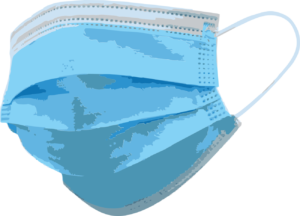
1. Surgical mask / cloth face mask studies, Erratum. correction:
Community and Close Contact Exposures Associated with COVID-19 Among Symptomatic Adults ≥18 Years in 11 Outpatient Health Care Facilities — United States, July 2020,
The US Centre for Disease Control performed a study which showed that 85 percent of those who contracted Covid-19 during July 2020 were mask wearers. Just 3.9 percent of the study participants never wore a mask.
2. Facial protection for healthcare workers during pandemics: a scoping review
This study used 5462 peer-reviewed articles and 41 grey literature records.
“Conclusion: The COVID-19 pandemic has led to critical shortages of medical-grade PPE. Alternative forms of facial protection offer inferior protection. More robust evidence is required on different types of medical-grade facial protection. As research on COVID-19 advances, investigators should continue to examine the impact on alternatives of medical-grade facial protection”
So how is your cloth and surgical mask working again if EVEN medical grade alternatives are failing ?
3. Physical interventions to interrupt or reduce the spread of respiratory viruses
“There is moderate certainty evidence that wearing a mask probably makes little or no difference to the outcome of laboratory-confirmed influenza compared to not wearing a mask”
4. Disposable surgical face masks for preventing surgical wound infection in clean surgery
“We included three trials, involving a total of 2106 participants. There was no statistically significant difference in infection rates between the masked and unmasked group in any of the trials”
5. Disposable surgical face masks: a systematic review
Two randomized controlled trials were included involving a total of 1453 patients. In a small trial there was a trend towards masks being associated with fewer infections, whereas in a large trial there was no difference in infection rates between the masked and unmasked group.
6. Evaluating the efficacy of cloth facemasks in reducing particulate matter exposure
“Our results suggest that cloth masks are only marginally beneficial in protecting individuals from particles<2.5 μm”
7. Face seal leakage of half masks and surgical masks
“The filtration efficiency of the filter materials was good, over 95%, for particles above 5 micron in diameter but great variation existed for smaller particles.
Coronavirus is 0.125 microns. therefore these masks wouldn’t protect you from the virus”
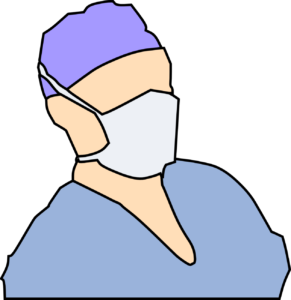 8. Comparison of the Filter Efficiency of Medical Nonwoven Fabrics against Three Different Microbe Aerosols
8. Comparison of the Filter Efficiency of Medical Nonwoven Fabrics against Three Different Microbe Aerosols
“The filter efficiencies against influenza virus particles were the lowest”
“We conclude that the filter efficiency test using the phi-X174 phage aerosol may overestimate the protective performance of nonwoven fabrics with filter structure compared to that against real pathogens such as the influenza virus”
9. Aerosol penetration through surgical masks
“Although surgical mask media may be adequate to remove bacteria exhaled or expelled by health care workers, they may not be sufficient to remove the submicrometer-size aerosols containing pathogens ”
10. Particle removal from air by face masks made from Sterilization Wraps: Effectiveness and Reusability
“We found that 60 GSM face mask had particle capture efficiency of 94% for total particles greater than 0.3 microns”
How big is the virus again? 0.125 microns.
11. A New Method for Testing Filtration Efficiency of Mask Materials Under Sneeze-like Pressure
This study states that “alternatives” like silk and gauze etc could possibly be good options in the pandemic. It’s done on starch particles.
Does not state how big they are either, but they can still get through the material and my research points out that starch particles are “big”, much bigger than most viruses.
12. Protecting staff against airborne viral particles: in vivo efficiency of laser masks
“The laser mask provided significantly less protection than the FFP2 respirator (P=0.02), and only marginally more protection than the surgical mask. The continued use of laser masks for respiratory protection is questionable. Taping masks to the face only provided a small improvement in protection”
13. Quantitative Method for Comparative Assessment of Particle Removal Efficiency of Fabric Masks as Alternatives to Standard Surgical Masks for PPE
“Worn as designed, both commercial surgical masks and cloth masks had widely varying effectiveness (53 – 75 percent and 28 – 91 percent particle removal efficiency, respectively)”. Different brand, different results and only when they applied “nylon layers” did the “efficiency” improve. Synthetic fibres do not breathe, so this will inevitably effect your breathing.
14. The efficacy of standard surgical face masks: an investigation using “tracer particles”
“Since the microspheres were not identified on the exterior of these face masks, they must have escaped around the mask edges and found their way into the wound”. Human albumin cells, aka aborted fetal tissue, is much larger than the virus and still escaped the mask.
15. Testing the efficacy of homemade masks: would they protect in an influenza pandemic?
“Our findings suggest that a homemade mask should only be considered as a last resort to prevent droplet transmission from infected individuals” so why has the government suggested you make your own when they are not effective ?
16. Using half-facepiece respirators for H1N1
“Increasing the filtration level of a particle respirator does not increase the respirator’s ability to reduce a user’s exposure to contaminants”
 17. Why Masks Don’t Work Against COVID-19
17. Why Masks Don’t Work Against COVID-19
The site is full of studies proving masks don’t work for coronavirus or the flu.
18. Masks Don’t Work: A Review of Science Relevant to COVID-19 Social Policy
This is full of studies proving mask protection is negligible for coronavirus, flu etc.
19. Face masks to prevent transmission of influenza virus: a systematic review
There is less data to support the use of face masks or respirators to prevent becoming infected.
20. “Exercise with facemask; Are we handling a devil’s sword?” – A physiological hypothesis
No evidence to suggest that wearing a mask during exercise offers any benefit from the droplet transfer from the virus.
“Exercising with facemasks may reduce available Oxygen and increase air trapping preventing substantial carbon dioxide exchange. The hypercapnic hypoxia may potentially increase acidic environment,cardiac overload, anaerobic metabolism and renal overload, which may substantially aggravate the underlying pathology of established chronic diseases”
21. Use of face masks by non-scrubbed operating room staff: a randomized controlled trial
Surgical site infection rates did not increase when non-scrubbed personnel did not wear face masks.
22. Surgical face masks in modern operating rooms – a costly and unnecessary ritual?
When the wearing of face masks by non-scrubbed staff working in an operating room with forced ventilation seems to be unnecessary.
23. Masks: a ward investigation and review of the literature
Wearing multi layer operating room masks for every visit had no effect on nose and throat carriage rates.
24. Aerosol penetration and leakage characteristics of masks used in the health care industry
The protection provided by surgical masks may be insufficient in environments containing potentially hazardous submirconometer-sized aerosols.
“Conclusion: We conclude that the protection provided by surgical masks may be insufficient in environments containing potentially hazardous submicrometer-sized aerosols”
25. Masks for prevention of viral respiratory infections among health care workers and the public: PEER umbrella systematic review
Meta analysis review that says there is limited evidence to suggest that the use of masks may reduce the risk of spreading viral respiratory infections.
26. Modeling of the Transmission of Coronaviruses, Measles Virus, Influenza Virus, Mycobacterium tuberculosis, and Legionella pneumophila in Dental Clinics
Evidence to suggest that transmission probability is strongly driven by indoor air quality, followed by patient effectiveness and the least by respiratory protection via mask use.
So this could explain “second waves” and has nothing to do with hand shaking, or not wearing a mask.
27. Nonpharmaceutical Measures for Pandemic Influenza in Nonhealthcare Settings-Personal Protective and Environmental Measures
The use of face masks, either by infected or non infected persons, does not have a significant effect on influenza transmission.
SO MASKS DON’T PROTECT YOU FROM ME, AND VICE VERSA.
28. Effectiveness of personal protective measures in reducing pandemic influenza transmission: A systematic review and meta-analysis
Meta analyses suggest that regular hand hygiene provided a significant protective effect over face masks and their insignificant protection.
29. Effectiveness of N95 respirators versus surgical masks against influenza: A systematic review and meta- analysis
Use of n95 respirators compared to surgical masks is not associated with a lower risk of laboratory confirmed influenza.
30. Adolescents’ face mask usage and contact transmission in novel Coronavirus
Face mask surfaces can become contamination sources. People are storing them in their pockets, bags, putting them on tables, people are reusing them etc. This is why this study is relevant:
31. Visualizing the effectiveness of face masks in obstructing respiratory jets
Loosely folded face masks and “bandana style” face coverings provide minimum stopping capability for the smallest aerosolized droplets.
This applies to anyone who folds or shoves a mask into their pockets or bag. It also applies to cloth and homemade cloth masks:
32. Use of surgical face masks to reduce the incidence of the common cold among health care workers in Japan: a randomized controlled trial
Face mask use in healthcare workers has not been demonstrated to provide benefit in terms of colds symptoms or getting colds.
 33. A cluster randomised trial of cloth masks compared with medical masks in healthcare workers
33. A cluster randomised trial of cloth masks compared with medical masks in healthcare workers
Penetration of cloth masks by influenza particles was almost 97 percent and medical masks 44 percent. so cloth masks are essentially useless, and “medical grade” masks don’t provide adequate protection.
34. Simple respiratory protection–evaluation of the filtration performance of cloth masks and common fabric materials against 20-1000 nm size particles
Cloth masks and other fabric materials tested in the study had 40-90 percent instantaneous penetration levels against polydisperse NaCl aerosols.
“Results obtained in the study show that common fabric materials may provide marginal protection against nanoparticles, including those in the size ranges of virus-containing particles in exhaled breath”
35. Respiratory performance offered by N95 respirators and surgical masks: human subject evaluation with NaCl aerosol representing bacterial and viral particle size range
“The study indicates that N95 filtering facepiece respirators may not achieve the expected protection level against bacteria and viruses”
36. Do N95 respirators provide 95% protection level against airborne viruses, and how adequate are surgical masks?
The n95 filtering respirators may not provide expected protection level against small virons
37. Do Surgical Masks Stop the Coronavirus?
38. Effectiveness of personal protective measures in reducing pandemic influenza transmission: A systematic review and meta-analysis
This study states that an N95, depending on the brand, can range from 0.1-0.3 microns. however, most people cannot buy an N95 with a micron smaller than 0.3 micron because they are expensive and not readily available on the public market.
“N95 respirators made by different companies were found to have different filtration efficiencies for the most penetrating particle size (0.1 to 0.3 micron)”
“Above the most penetrating particle size the filtration efficiency increases with size; it reaches approximately 99.5% or higher at about 0.75 micron”
“Meta-analyses suggest that regular hand hygiene provided a significant protective effect (OR=0.62; 95% CI 0.52-0.73; I2=0%), and facemask use provided a non-significant protective effect (OR=0.53; 95% CI 0.16-1.71; I2=48%) against 2009 pandemic influenza infection”
39. Effectiveness of N95 respirators versus surgical masks against influenza: A systematic review and meta- analysis
“The use of N95 respirators compared with surgical masks is not associated with a lower risk of laboratory- confirmed influenza. It suggests that N95 respirators should not be recommended for the general public or non high-risk medical staff who are not in close contact with influenza patients or suspected patients”
N95 masks did show a positive effect for BACTERIA but not viruses.
40. Adolescents’ face mask usage and contact transmission in novel Coronavirus
This study used dye to show if masks were contaminated. “As a result, masks surface becomes a contamination source. In the contact experiment, ten adults were requested to put on and off a surgical mask while doing a word processing task. The extended contamination areas were recorded and identified by image analysis”
41. Use of surgical face masks to reduce the incidence of the common cold among health care workers in Japan: a randomized controlled trial
“Of the 8 symptoms recorded daily, subjects in the mask group were significantly more likely to experience headache during the study period”
“Face mask use in health care workers has not been demonstrated to provide benefit in terms of cold symptoms or getting colds”
42. Effectiveness of Adding a Mask Recommendation to Other Public Health Measures to Prevent SARS CoV-2 Infection in Danish Mask Wearers : A Randomized Controlled Trial
“The recommendation to wear surgical masks to supplement other public health measures did not reduce the SARS-CoV-2 infection rate among wearers by more than 50 percent in a community with modest infection rates, some degree of social distancing, and uncommon general mask use”
43. A cluster randomised trial of cloth masks compared with medical masks in healthcare workers
“An analysis of mask use showed ILI (RR=6.64, 95 percent CI 1.45 to 28.65) and laboratory-confirmed virus (RR=1.72, 95 percent CI 1.01 to 2.94) were significantly higher in the cloth masks group compared with the medical masks group. Penetration of cloth masks by particles was almost 97 percent and medical masks 44 percent”
44. Respiratory performance offered by N95 respirators and surgical masks: human subject evaluation with NaCl aerosol representing bacterial and viral particle size range
“The study indicates that N95 filtering facepiece respirators may not achieve the expected protection level against bacteria and viruses. An exhalation valve on the N95 respirator does not affect the respiratory protection”
45. Performance of N95 respirators: filtration efficiency for airborne microbial and inert particles
Coronavirus is 0.125 micron, as you can read in this study, it states that most N95 masks can only filter particles as small as 0.75 microns. This is too big to trap this virus. that is a fact.
And even with an efficiency of 95 percent (depending on brand, so filtration may be lower) IF the virus can be trapped… it’s still missing 5 percent and maybe more based on an N95 that has 0.1 microns .
CORONAVIRUSES ARE 0.125 MICRON. SO THE BEST N95 ON THE MARKET WOULD DO NOTHING .
46. A Novel Coronavirus from Patients with Pneumonia in China, 2019
A Chinese study that proves that an airborne coronavirus particle (0.125 micron) can pass directly through an n95 mask
47. Airborne coronavirus particle (<0.125 micron) will pass directly through a N95 face mask.
SIZE OF THE CORONAVIRUS: Size can vary but all are smaller than 0.3 micron .
“Human coronaviruses measure between 0.1 and 0.2 microns, which is one to two times below the cutoff” This “cut off” is referring to the size an N95 mask can trap. Most of us, are not using MEDICAL or regular N95s.
Face Mask Side Effects and Implications
 1. Preliminary report on surgical mask induced deoxygenation during major surgery
1. Preliminary report on surgical mask induced deoxygenation during major surgery
Face mask side effects include lowered oxygen levels.
This study proved that surgeons that wore a mask in surgery for an hour + had significant reductions in blood oxygen saturation.
This is relevant because most of us are being made to wear face masks at work for the whole shift, long journeys on public transport, and when we are in a public places doing shopping etc. and this requires a degree of exertion that is not taken into account.
“Considering our findings, pulse rates of the surgeon’s increase and SpO2 decrease after the first hour.”
Decreasing oxygen and increasing carbon dioxide in the bloodstream stimulates a compensatory response in the respiratory centers of the brain. These changes in blood gases result in increases in both frequency and depth of breaths. This exposes another risk – if your mask traps some virus you are breathing more hence increasing viral load and exposure.
2. Impact of structural features on dynamic breathing resistance of healthcare face mask
Face mask side effects include impeded breathing.
Ask people if they have issues breathing in these masks. anecdotal or not, as everyone is different.
“The results showed that each evaluation index was significantly different (P < 0.05) among different test
masks”
3. Respiratory consequences of N95-type Mask usage in pregnant healthcare workers-a controlled clinical study
The benefits of using N95 mask to prevent serious emerging infectious diseases should be weighed against potential respiratory consequences associated with extended N95 respirator usage.
“It is known that the N95 mask, if worn for hours, can reduce blood oxygenation as much as 20 percent, which can lead to a loss of consciousness, as happened to the hapless fellow driving around alone in his car wearing an N95 mask, causing him to pass out, crash his car and sustain injuries. I am sure that we have several cases of elderly individuals or any person with poor lung function passing out, hitting their head. This, of course, can lead to death”
“CONCLUSIONS: Breathing through N95 mask materials have been shown to impede gaseous exchange and impose an additional workload on the metabolic system of pregnant healthcare workers, and this needs to be taken into consideration in guidelines for respirator use”
Yet we force pregnant women to use them…? What could this do to the fetus?
4. Headaches and the N95 face-mask amongst healthcare providers
Face mask side effects include headaches.
These headaches can force you to use added or unnecessary medications like painkillers that carry their own side effects. The theory as to why masks can trigger headaches is the RESTRICTION OF OXYGEN.
What are the long-term health effects on Health Care Workers with headaches arising from impeded breathing?
Here are several sources and studies that back up this claim:
Headaches Associated With Personal Protective Equipment – A Cross-Sectional Study Among Frontline Healthcare Workers During COVID-19
Study article: https://pubmed.ncbi.nlm.nih.gov/32232837/
How to Avoid Migraine Triggers While Wearing Your Mask
5. Use of surgical face masks to reduce the incidence of the common cold among health care workers in Japan: a randomized controlled trial
“Of the 8 symptoms recorded daily, subjects in the mask group were significantly more likely to experience headaches during the study period”
“Face mask use in health care workers has not been demonstrated to provide benefit in terms of cold symptoms or getting colds”
6. Your Health Your Responsibility
This video shows that even reading a book with a mask on decreases blood oxygen levels to your brain. what implications does this have for developing children forced to wear masks at school etc?
7. Physiological impact of the N95 filtering facepiece respirator on healthcare workers
“CONCLUSIONS: In healthy healthcare workers, FFR did not impose any important physiological burden during 1 hour of use, at realistic clinical work rates, but the FFR dead-space carbon dioxide andoxygen levels were significantly above and below, respectively, the ambient workplace standards, and elevated P(CO2) is a possibility”
Remember in “healthy healthcare workers” even their carbon dioxide levels rose. Most of the wider public have at least one health problem. Even healthy people were shown to have elevated CO2 levelsabove the healthy guidelines.
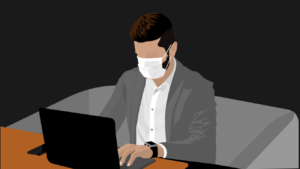 8. The adverse skin reactions of health care workers using personal protective equipment for COVID-19
8. The adverse skin reactions of health care workers using personal protective equipment for COVID-19
Face mask side effects include adverse skin reactions
The adverse skin reactions of health care workers using personal protective equipment for COVID-19
9. Your Mask May Be Causing Candida Growth in Your Mouth
Face mask side effects include yeast infections
10. ‘Mask mouth’ is a seriously stinky side effect of wearing masks
Face mask side effects include dental issues.
“We’re seeing inflammation in people’s gums that have been healthy forever, and cavities in people who have never had them before,” says Dr. Rob Ramondi, a dentist and co-founder of One ManhattanDental. “About 50 percent of our patients are being impacted by this, [so] we decided to name it ‘mask mouth’ — after ‘meth mouth.’ ”
“While mask mouth isn’t quite as obvious, if left untreated, the results could be equally harmful.
Gum disease — or periodontal disease — will eventually lead to strokes and an increased risk of heart attacks,”
says Dr. Marc Sclafani, another co-founder of One Manhattan Dental”
11. All That Mask-Wearing Could Be Giving You (Gasp!) Mouth Fungus—Here’s How to Deal With it
12. ‘Maskne’ Is a Real Thing—Here’s How to Stop Face Mask Breakouts
Face mask side effects include acne
13. Improper use of medical masks can cause infections Face mask side effects include mould and infections
Masks can cause bacterial and fungal infections around the mouth, and in the mouth and lungs EVEN if you wash the cloth mask. Mould colonies were found in masks in as little as one day.
14. Mould Colonization in Your Sinuses Could Be Holding You Back From Making a Full Recovery
Information on mould and how it can affect your health.
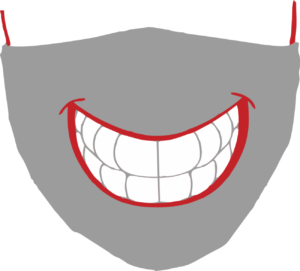 15. An investigation into the efficiency of disposable face masks
15. An investigation into the efficiency of disposable face masks
What are the dangers of bacterial and fungal growths on a used and loaded mask?
This study tested all kinds of disposable masks and proved they cause you to breathe back in your own crap.
16. Can the Elastic of Surgical Face Masks Stimulate Ear Protrusion in Children?
Disfiguration in children. Can masks stimulate ear protrusion in children?
This is due to masks that are too tightly fitted.
Tight masks can also cause tension headaches. Is this healthy for children long term?
17. When You Wear A Face Mask Every Day, This Is What Happens To Your Lungs
Mask use can trigger allergies due to the mask collecting particles that stay on you for long periods of time.
18. The physiological impact of wearing an N95 mask during hemodialysis as a precaution against SARS in patients with end-stage renal disease
The physiological impact of wearing an N95 mask during hemodialysis as a precaution against SARS in patients with end-stage renal disease.
And yet, we make sick people wear them. Even people without breathing issues, have lowered oxygen rates.
19. Other Face Mask Side Effects and Health Implications to Consider
There is a great potential for harm that may arise from public policies forcing mask use on the wider population.
The following unanswered questions arise unanswered:
• Can masks shed fibers or micro plastics that we can breathe in?
• Do these masks excrete chemical substances that are harmful when inhaled?
• Can masks excrete chemicals or fumes when heated, either with body heat sunlight or other sources of heat?
• Clothing dye can cause reactions, so how do we know that the manufacturing process of these masks do not pose a risk to us? Because, in reality, we do not buy our masks from medical companiesor facilities who operate in sterile environments.
20. [Gaps in asepsis due to surgical caps, face masks, external surfaces of infusion bottles and sterile wrappers of disposable articles] “It is obvious that the surfaces of the boxes of sterile packed disposable instruments and infusion bottles are not sterile. The disposable surgical masks and surgical caps used for sterile clothing are delivered by the producers not sterile, either.” AND THIS IS HOSPITAL EQUIPMENT.
21. Mask Production Video
This is a “factory” that produces a lot of masks. Does this look a sterile environment to you? This is what the majority of us are getting when we purchase online or in stores that sell them in bulk. Do you want that on your face?
22. Allergies and the Immune System
Can pathogen-laden droplets interact with environmental dust and aerosols captured on the mask? Can this elicit a greater reaction to viruses? For example, if you have a dust allergy your mask is collecting this thus causing inflammation to the wearer and lowering his or her immune system.
“This can cause wheezing, itching, runny nose, watery or itchy eyes, and other symptoms” would that not
facilitate spread and infection rate of viruses?
23. Virus interactions with bacteria: Partners in the infectious dance
Bacteria and viruses can interact an increase infection susceptibility:
24. When viruses and bacteria unite!
25. An empirical and theoretical investigation into the psychological effects of wearing a mask
Face mask side effects include altered behaviour
Are there negative social consequences to a masked society? This study implies that, yes, masks do cause people to adopt altered behaviours based on mask use.
26. Mask mandates may affect a child’s emotional, intellectual development
Face mask side effects stagnate a child’s natural intellectual development. It is well known that children find it hard to recognize faces up until a certain age. Mask use will further interfere with this. Is this healthy for a developing child?
 27. Disabled People and Masks Contributing Toward Mental Health Issues
27. Disabled People and Masks Contributing Toward Mental Health Issues
Face mask side effects and mental health
What about disabled people? Deaf /people hard of hearing rely on mouth reading. What are the implications for them? What about people who suffer cognitive and behavioural disorders like autism? This could cause them HUGE distress. Not just from wearing a mask, but seeing others in masks (because let’s face it – IT’S NOT NORMAL BEHAVIOUR).
Can masks cause anxiety, or make other mental health disorders worse?
Since masks CAN impede breathing, this can cause fainting and other bodily reaction that would otherwise be avoided if masks were not used. Here is a search engine link to prove that it is very common:
28. Maine study looks into long-term psychological effects of wearing face masks coronavirus, COVID-19 pandemic
This is a study on the psychological effects of masks.
29. Masking the Truth – Face Masks, Empathy and Dis-inhibition
30. Covid-19 face masks: A potential source of microplastic fibers in the environment
What are the environmental consequences of mask manufacturing and disposal?
Proof of increased littering due to increased mask use. a quick engine search will tell you, people are dumping them EVERYWHERE – into our rivers, into greenland areas etc. Plastics like nylon leach chemicals are going into our environment.
32. Why Masks Don’t Work Against COVID-19
Can used and loaded masks become vectors of enhanced transmission for both the wearer and other people? (The evidence from studies suggest yes). Masks become useless after about 20 minutes due to the moisture in your breath. This moisture can become the droplets that viruses travel on. Can this not facilitate transmission?
Can masks become collectors and retainers of pathogens that otherwise, could be avoided when breathing without a mask? (The evidence suggests yes).
Can large droplets trapped via a mask become atomized or aerosolized into breathable components? Even down to the virion size. (The evidence suggests yes).
Mask spelled backwards is Skam.
After reviewing and discerning the mask science, what to do?
 Trust the Science.
Trust the Science.
Related Articles:

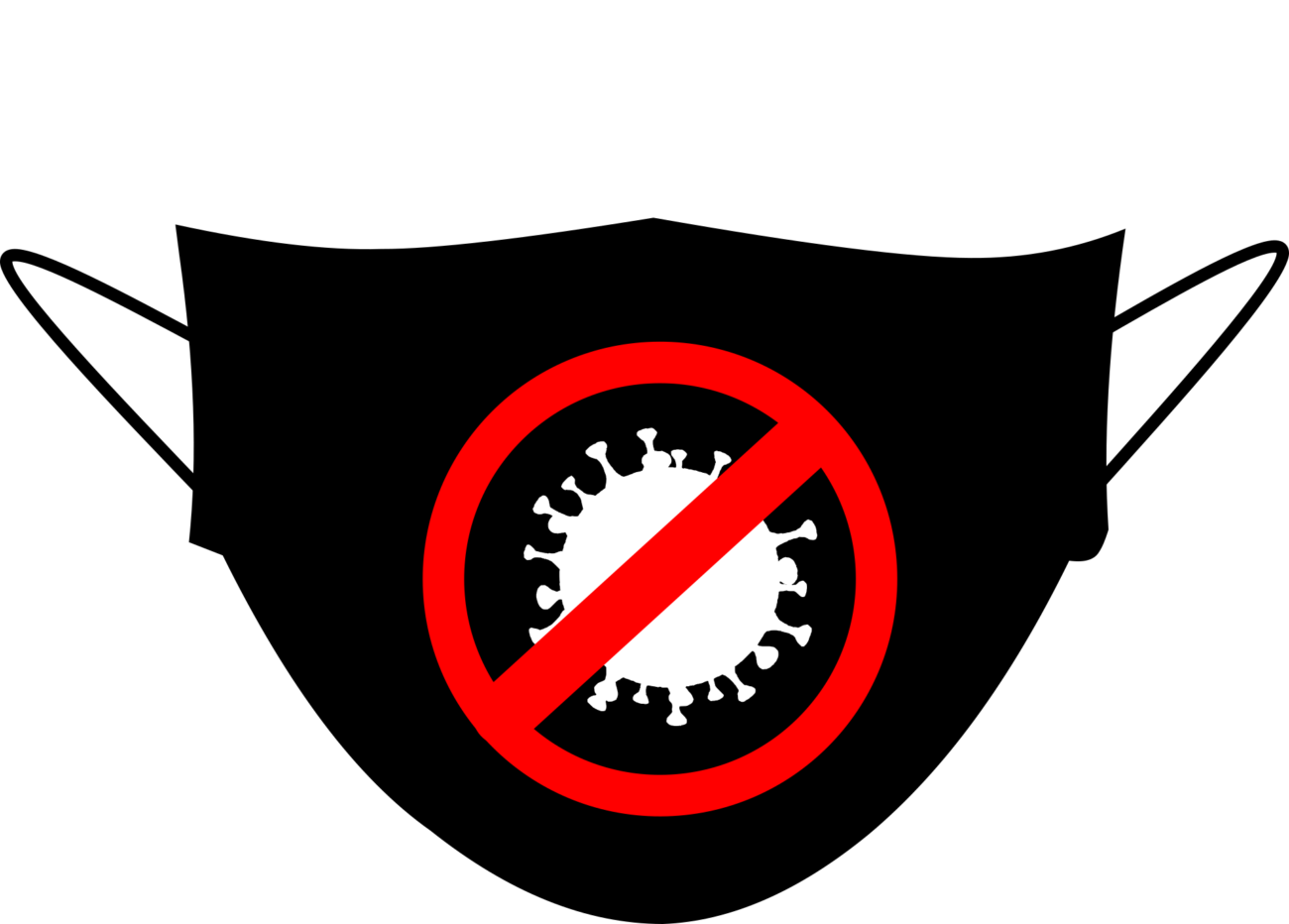



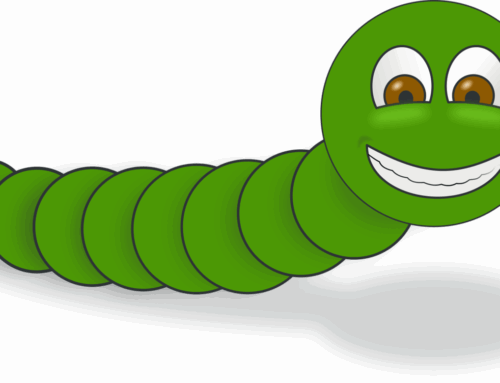
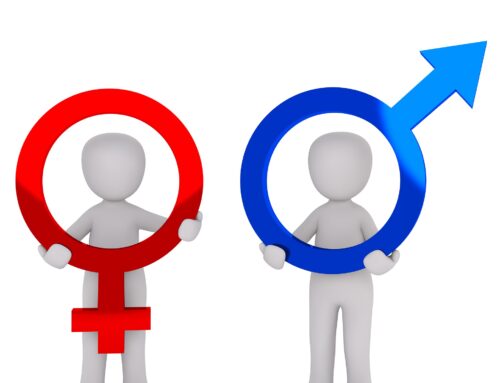

Dear Doctor, Scholar and Truth-Teller,
You covered just about everything in the biggest lie in human history for the enslavement of mankind or humankind, by the most diabolical misanthropes (and there were many more in the past) the world. has ever seen. They started (Monsanto) with genetically altering seeds in order to monopolize the seed/farming and food industry and used their public relations propagandists to justify GMO’s as a scientific breakthrough to benefit humanity..
And with the Davos, Switzerland/Klaus Schwab Great Reset Plan to control the world, they were quite successful in terrorizing the world.
Rosanne lays it all out in this indictment about the SCAMdemic called Covid-19.
Thank you dear Doctor! You are a Godsend!